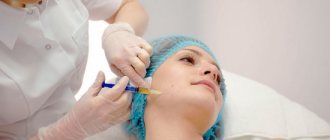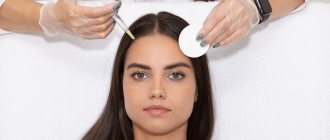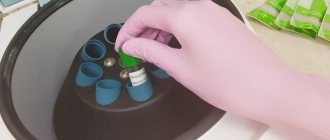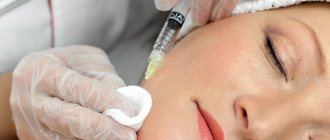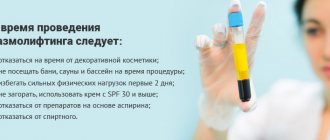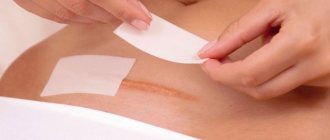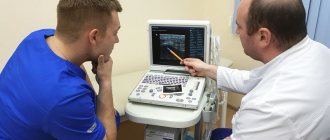The plasma lifting procedure is based on the use of the properties of blood plasma platelets. Platelets, as structural elements of blood, not only control the process of blood coagulation and the formation of blood clots (thrombi), but are also carriers of special proteins that can stimulate restoration processes in cells. Plasmolifting is based on the principle of autoplasma therapy - treating a person with his own blood plasma.
Beneficial components are released from blood plasma - proteins, hormones, vitamins, which, together with platelets, contribute to the restoration and renewal of tissues. If at first the method of extracting blood plasma was focused on dentistry, recently plasma lifting has been used more and more often in cosmetology, restorative therapy and other areas of medicine.
- The procedure requires blood sampling from the patient (about forty milliliters). As a rule, this is a small volume of blood that will not have a negative effect on the body, but, on the contrary, will enhance hematopoiesis.
- After blood is collected, it is centrifuged due to the fact that different blood cells have different weights and densities. This helps separate them from the blood.
- During the procedure, only high-quality test tubes are used that are capable of qualitatively separating platelet mass with plasma from red blood cells and leukocytes.
- During the procedure, the patient’s own plasma is used, which ensures the absence of adverse reactions - allergies, rejection.
Platelet-rich and platelet-poor plasma – which one do you need?
The basis of the plasmolifting procedure is the introduction of concentrated blood plasma rich in platelets. Plasma that does not contain enough platelets is useless. This means that when choosing a clinic where plasma lifting is performed, you need to ask what drug will be administered.
Let's look at what platelet-rich plasma is, how it differs from regular blood, and why it's difficult to obtain.
Our blood has the following composition:
- Liquid plasma – approximately 55%. Consists mainly of water and proteins, vitamins, minerals and other nutrients.
- Leukocytes - white blood cells and platelets - are normal at 1%.
- Red blood cells - about 44%.
After the blood collected from the patient is centrifuged, these components are separated according to the principle that the heavier elements sink to the bottom and the lighter ones rise.
Plasmolifting – drug
Below are red blood cells, above is plasma, and between them is the most important layer of white blood cells and platelets - the buffy-platelet layer.
If, after centrifuging the blood, you inject into the patient what is in the upper layer, the procedure will not give any effects, since this part is devoid of the most important components necessary for full treatment. That is, there are almost no platelets in it, which are in a thin layer with leukocytes.
In the buffy-platelet layer, the concentration of platelets is up to 70 times higher compared to the concentration in non-centrifuged blood. But this layer is very thin. Depending on the amount of blood collected, it only contains about 0.2-0.3 ml of concentrated liquid.
Those. In fact, an aesthetic medicine doctor can only use about 20% of the contents of the tube; the rest must be thrown away. But even 4 ml of the drug is enough to carry out plasma lifting on the entire face.
Of course, then the concentration of the drug exceeds the total concentration not by 70, but by 7 times, provided that we take 30 ml of blood, of which 0.3 ml is the buffy-platelet layer, and about 3.7 ml is plasma. This concentration of the drug for facial care is effective, but when diluted, it decreases sharply.
So, the higher the concentration of leukocytes and platelets, the higher the effectiveness of the procedure. Therefore, for some areas of the face, for example, to treat the skin around the eyes, a more concentrated preparation is prepared. Instead of 4 ml of the drug, 2 ml of a highly concentrated drug is obtained from the same volume of blood. In turn, small scars can only be treated with a drug diluted with plasma.
Description of the procedure and technique of plasma lifting
Youth is in human blood. Plasmolifting is an injection therapeutic and rejuvenating revitalizing procedure: platelet plasma from the patient’s blood is injected under the skin in problem areas. The plasmolifting procedure is an improved form of autoplasmotherapy - plasma treatment technology.
Benefits of plasma lifting
- autoplasma is isolated from the patient’s blood without contacting the external environment
- autoplasma is used without adding additional components other than heparin. This ensures safety and minimal risk of rejection, side effects, allergic reactions
- painlessness and absence of a long recovery period
- versatility - widely used in medicine
- the rejuvenation effect occurs after the first session and lasts for at least two years
How does plasma lifting work?
The facial plasmolifting procedure involves injections of the patient’s own platelet plasma. Plasma contains blood proteins - growth factors and is capable of activating the work of body cells and stimulating the process of tissue repair. Replenishes the lack of moisture and oxygen in aging skin. After the first procedure, irritation and peeling disappear, the synthesis of elastin and collagen fibers is activated, the skin becomes elastic, and the oval of the face becomes clear.
Protective systems are activated, and the skin more effectively resists the aging process. She becomes young not only in appearance, but begins to function as young. It is worth noting that the fundamental difference between this method of rejuvenation is the activation of skin renewal mechanisms, stopping the aging process
Plasmolifting results
The skin becomes more toned and smooth, its natural rejuvenation occurs, elasticity increases, aging slows down and dark circles disappear under the eyes, complexion improves immediately after the first session.
In terms of external effect, the procedure is compared with surgical superficial face lifting. However, its main advantage is the absence of surgical intervention. One of the unique effects of plasma lifting is that the skin begins to “glow” from the inside, becoming velvety, soft and smooth.
It is worth noting that the results of the procedure depend on the patient’s health, skin, and age. The sooner plasma lifting is carried out, the faster positive changes will occur and the fewer procedures you will have to undergo. The effect lasts up to two years. You can evaluate the results by studying the photos before and after plasma lifting
Several sessions may be needed to obtain a lasting effect. The course is prescribed to each patient individually. Specialists at Rednor cosmetology centers provide such services at a high quality professional level. We have very affordable prices for plasma lifting in Moscow
Plasmolifting in cosmetology allows you to obtain the following results without the use of expensive devices and operations, as well as without side effects
- improve complexion
- reduce the intensity of age spots
- slow down the aging process
- remove expression wrinkles
- deeply nourish and moisturize the skin
- remove post-acne and acne
- get rid of acne
- tighten the oval of the face, increase skin turgor
- rehabilitate skin after excessive sun exposure
- make scars and scars less noticeable
- speed up recovery after chemical and laser peeling
- improve the condition of the scalp
Indications for plasma lifting
Reduced skin turgor due to age-related changes
- appearance of fine wrinkles
- deterioration of skin condition and appearance
- dryness and flaking
- acne
- early stage of prolapse of neck and face tissues
- stretch marks, scars and scars
- strong ultraviolet radiation
- seborrhea
- hair loss and thinning
- rehabilitation after chemical or laser peeling
Plasma separation tube sets - right and wrong
The safety and effectiveness of plasma lifting depends on proper plasma preparation. The specialist should not use simple test tubes; only certified disposable kits should be used.
It is important to understand that the leukocyte-platelet layer between red blood cells and plasma is so thin that it is practically technically impossible to obtain without special equipment - profiled tubes with narrowings or a set of channels for separating plasma.
Plasmolifting
How is the plasma lifting procedure performed?
Plasma is prepared immediately before the plasma lifting procedure; the centrifugation process takes no more than 15 minutes. At this time, an anesthetic cream is applied to the patient to make the procedure more comfortable.
Plasma is injected with special very thin needles using various techniques similar to mesotherapy. According to indications, it is possible to use atraumatic cannulas of various lengths and diameters. The plasma lifting procedure is quite comfortable, which makes it popular among patients.
Centrifuge and correctly selected centrifugation parameters
The centrifugation process cannot be too fast, otherwise the platelets will be damaged. It should also not be too slow, otherwise it will be impossible to properly separate the blood components.
Proper placement of the tubes is also important. Centrifuge tubes must be positioned horizontally because the centripetal force acts parallel to the long axis of the tube. In angled centrifuges, the tube is centrifuged at an angle of 20-30 degrees, and this already gives a worse effect.
Horizontal centrifuges cost twice as much as angular centrifuges, which is why most cosmetologists purchase angular devices. This reduces the cost of the procedure, while simultaneously reducing efficiency.
What is the essence of the Plasmolifting method?
The essence of the plasmolifting method is the injection of platelet-rich plasma from the patient’s own blood into the dermis. Platelet autoplasma contains high concentrations of growth factors, proteins, carbohydrates, and vitamins.
Thus, the formation of collagen and elastin by fibroblasts is stimulated, due to which the effect of natural skin rejuvenation is achieved, tissue respiration and water balance are normalized, metabolic processes are restored, local immunity is activated, microcirculation and metabolism in skin cells are improved.
Proper preparation for plasma lifting. Why you don’t need to buy plasma cream
Plasma platelets are active for approximately 20 minutes. Therefore, to meet this time, the injection procedure must be performed quickly and efficiently. Platelets “work” in the plasma; when they enter tissue, they are activated and release growth factors. Activation occurs as a result of contact of the drug with fibroblasts.
In some beauty clinics, part of the plasma remaining after treatment is mixed with a cream base and sold to clients for a lot of money. But due to the short lifespan of active platelets, all plasma-based creams are pointless.
Plasmolifting for hair diseases:
Plasmolifting has taken a strong place in trichology. Currently, this method has become one of the most effective ways to treat hair loss. Hair loss slows down within a few days after the first plasma lifting procedure; stops completely - after the second; The work of the sebaceous glands is normalized, the hair structure is restored. After a course of procedures, active growth of healthy and thick hair begins.
Hair loss is a serious problem that affects appearance, the development of stress and, ultimately, reduces a person’s self-esteem. If you are faced with the problem of hair loss, contact the specialists of the ABIA Clinic for help. We will do everything possible to maintain the health and beauty of your hair.
Plasmolifting is an expensive procedure. How to save money?
Platelet-rich plasma is a safe and effective treatment, but it is not a panacea for all skin aging problems, so it should only be used where plasma lifting is effective. To do this, you need to contact a good specialist who will give clear recommendations on the number of procedures, areas of plasma injection and tell you about the expected results.
It is also worth remembering that treatment with truly platelet-rich plasma cannot be cheap, since a good centrifuge is expensive, and professional plasma lifting kits are disposable and are also quite expensive. If you are offered cheap plasma lifting, this is not savings, but a waste of money, since in this case we are not talking about any effectiveness.
Plasmolifting of the face
- age-related changes (skin aging, sagging, wrinkles, hyperpigmentation);
- deterioration of the skin after exposure to sunlight (i.e. photoaging);
- purulent skin diseases (for example, acne, skin conditions after acne worsening);
- skin hypersensitivity;
- changes in face shape;
- removal of scars;
- skin restoration after peeling;
- dermatological problems (eczema, atopic dermatitis, psoriasis);
- cellulite.
INDICATIONS FOR PLASMOLIFTING
Plasmolifting is used in various fields of medicine - cosmetology, dermatology, gynecology, urology, dentistry, neurology, orthopedics, trichology, and sports medicine. Therefore, let’s present a set of indications taken from various areas:
- skin changes, both age-related and non-age-related (acne, neurodermatitis, etc.);
- rehabilitation after irradiation with ultraviolet rays;
- baldness, sparse hair;
- seborrhea;
- inflammatory diseases of the joints;
- osteochondrosis;
- sports injuries;
- cervical erosion;
- muscle spasms;
- cystitis;
- urethritis;
- skin restoration after peeling;
Contraindications to the procedure
All contraindications to plasma lifting can be divided into relative and absolute. Note that in case of relative contraindications, the procedure is possible, but only after eliminating the decisive factor according to which the procedure is prohibited.
Absolute contraindications to plasma lifting:
- autoimmune diseases;
- oncological diseases;
- diseases of the blood, connective tissue. Relative contraindications:
- pregnancy and breastfeeding;
- exacerbation of chronic diseases;
- inflammation in those places where it will be necessary to inject plasma;
- infectious diseases;
- taking medications that impede the blood clotting process.
Features of plasma lifting in gynecology
The first step of the procedure is to collect venous blood from the patient from the cubital vein using a catheter. As a rule, 45-60 ml is enough. The blood is placed in special tubes that contain heparin and separating gel. They are installed in a centrifuge and the desired rotation speed is selected. After 5 minutes the test tube is removed. Thanks to the separation gel, a layer of supernatant, i.e., separated autoplasma, is already clearly visible in it. It is taken out with a syringe and administration begins immediately.
It is extremely important that only specially designed tubes and centrifuges are used to obtain plasma.
The plasmolifting procedure itself is not associated with severe pain, even if anesthesia is abandoned. But to ensure the patient’s comfort during the procedure, an anesthetic gel or spray is first applied to the treatment area. Its effect appears within 5-10 minutes.
The procedure is performed on a gynecological chair. The doctor treats the affected area with an antiseptic and begins injections. They are carried out with syringes with special needles of small diameter and length. In this case, its main task is to introduce autoplasma as close as possible to the site of pathological changes. Therefore, there are several methods for performing plasma lifting in gynecology:
- Subepithelial intracervical injection. The technique is used to treat cervical pathologies. It requires the use of mirrors to expose the treatment area and consists of introducing plasma under the mucous membrane over the entire visible surface of the cervix with the formation of small papules. In nulliparous women, injections are performed in a circle around the external os of the cervical canal. For patients who have given birth, injections are given in 2 rows along the anterior and posterior lips of the cervix. One procedure requires about 2-4 ml of plasma. The method is indicated for the treatment of exocervicitis, erosion, atrophic changes in the cervix.
- Paracervical administration. The technique consists of performing injections through the lateral vaults of the vagina in the area behind the cervix. Initially, the cervix is exposed with the help of mirrors and fixed with bullet forceps, which facilitates the manipulation. With their help, the doctor carefully moves the neck slightly to the right and injects 2-2.5 ml of plasma in one injection, and then to the left and performs a similar injection. The method is indicated for salpingoophoritis, metroendometriosis, hormonal disorders, and infertility.
- Intrauterine or intracavitary administration. The technique involves inserting a sterile catheter into the uterine cavity through the cervical canal and injecting 1.5-2.5 ml of the patient’s blood plasma. After 5-7 minutes, the woman can get up, get dressed and return to everyday activities. With congenital narrowness of the cervical canal, its expansion can be carried out. The method is used to treat metroendometriosis and infertility.
- Subepithelial vaginal insertion. The technique consists of making numerous small papules through targeted injections of autoplasma under the mucous membrane on all surfaces of the vagina, including the G-spot area. In this way, about 3-4.5 ml of plasma is injected. The technique is used for atrophic changes in the urogenital tract, leukoplakia, kraurosis or lichen sclerosus, and the need to increase tactile sensitivity of the genital organs.
- Subepithelial injection of autoplasma into the external female genitalia. The essence of the method is similar to the previous one. In the same way, injections are performed using the papular technique under the mucous membrane of the external genitalia. First of all, the doctor works with the labia minora, then moves on to the skin of the labia majora and perineum. In general, about 3-4.5 ml of autoplasma is injected during one procedure. The technique is used to correct atrophic changes in the external genitalia and solve aesthetic problems.
After plasma lifting, women are advised to refrain from visiting swimming pools, solariums, baths, saunas, heavy physical activity and sexual activity for 2-3 days.
Plasmolifting for hair treatment
Of particular note is the use of this technique in the treatment of alopecia. Platelet autoplasma injected into the patient’s skin prevents the death of hair follicles and “switches” them from the loss phase to the growth phase. Microcirculation improves, pathogenic microflora is suppressed, and nutrition of the hair follicle is activated. There is an increase in hair growth, a cessation of the process of hair loss, and an improvement in the quality of the hair shaft. Hair gains shine, elasticity and thickness. Plasmolifting of the scalp is the procedure of choice for oily seborrhea and dandruff.
